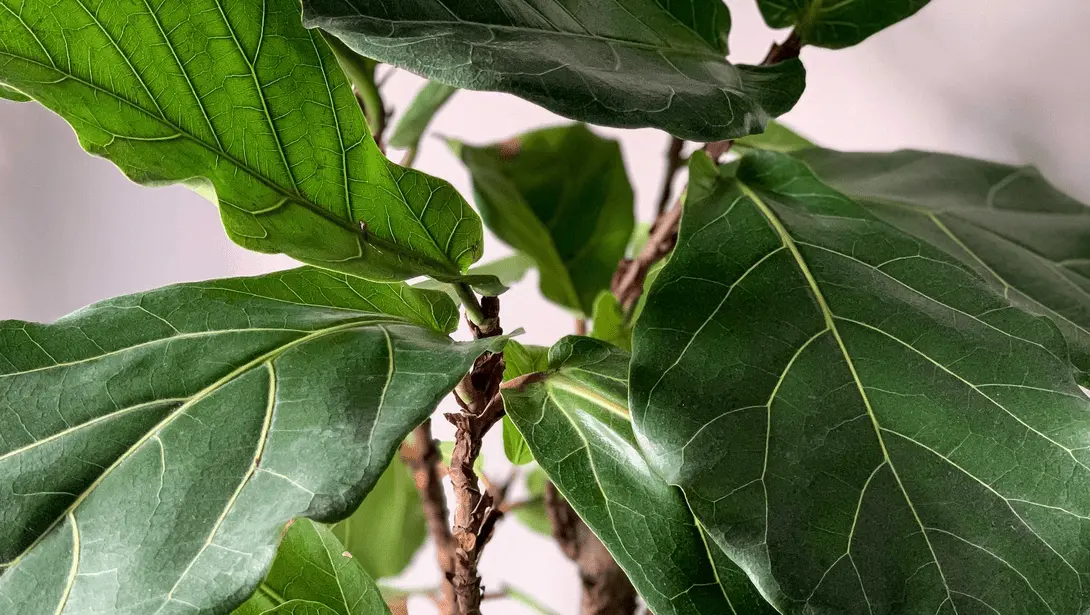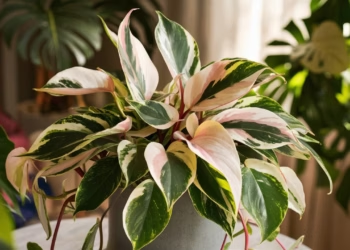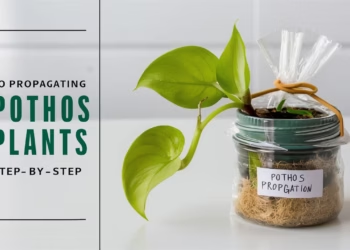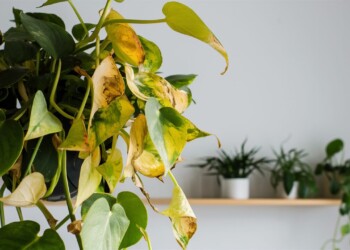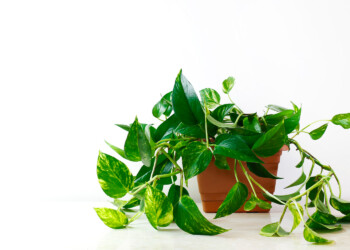Fiddle leaf figs, with their bold, glossy leaves and towering presence, have become a beloved centerpiece in many homes. But what if you could have more of these beauties without breaking the bank? Propagation is the key! In this guide, we’ll walk you through three foolproof methods to propagate your fiddle leaf fig and ensure you get those Instagram-worthy results. Ready to dive in? Let’s get started!
The Basics of Fiddle Leaf Fig Propagation
Before we jump into the nitty-gritty, it’s crucial to understand why fiddle leaf fig propagation is such a hit among plant enthusiasts. Not only does it allow you to multiply your plant family, but it also gives you a hands-on project that’s both rewarding and fun. Plus, you’ll have plenty of plants to share with friends or even trade for new species. Talk about a win-win!
Why Propagate?
- Save Money: Growing new plants from cuttings means you don’t have to buy new plants.
- Share the Love: Gift propagated plants to friends and family.
- Control Growth: Shape your plants the way you want from the start.
Now, let’s dive into the three methods you can use to propagate your fiddle leaf fig: stem cuttings in water, stem cuttings in soil, and air layering.
Method 1: Stem Cuttings in Water
One of the easiest and most popular methods to propagate fiddle leaf figs is by using stem cuttings in water. It’s simple, and you can see the roots developing, which is super satisfying!
What You’ll Need
- A healthy fiddle leaf fig plant
- A sharp, sterilized knife or pruning shears
- A clean glass or jar
- Water
Step-by-Step Guide
- Select a Healthy Stem: Choose a healthy stem with at least two nodes that’s at least 6 inches long with a few healthy leaves.
- Make the Cut: Using your sterilized knife, cut just below a node (where a leaf meets the stem).
- Prepare the Cutting: Remove the lower leaves, leaving 1-2 leaves at the top.
- Place in Water: Place the cutting in a glass of water, ensuring that the node is submerged.
- Provide Warmth and Light: Place the container in a warm spot with indirect light to encourage root growth.
- Monitor Root Development: Check weekly for root growth, which typically occurs within six weeks.
- Wait for Roots: Change the water every few days to keep it fresh.
- Transfer to Soil: Once roots are about 1-2 inches long, transfer the cutting to a pot with well-draining soil.
- Continue Care: Keep the soil moist for 1-2 weeks and maintain optimal growth conditions.
Tips for Success
- Be patient! Rooting can take several weeks.
- Use filtered or distilled water if your tap water is heavily chlorinated.

Method 2: Stem Cuttings in Soil
If you prefer a more direct approach, propagating fiddle leaf figs directly in soil is a fantastic option. It requires a bit more attention upfront, but it can yield strong, healthy plants.
What You’ll Need
- A healthy fiddle leaf fig plant
- A sharp, sterilized knife or pruning shears
- Rooting hormone (optional but recommended)
- Potting mix (well-draining)
- A small pot or container
- Plastic bag or humidity dome
Step-by-Step Guide
- Select and Cut: As with the water method, choose a healthy stem with 2-4 nodes and cut just below a node.
- Prepare the Cutting: Remove the lower leaves, cut a 6-inch stem at a 45-degree angle right below a node. Trim the leaves off the portion that will be planted in the soil.
- Dip in Rooting Hormone: Dip the cut end of the stem (1-1.5 inches) in rooting hormone to encourage faster root growth.
- Plant in Soil: Fill a small pot with well-draining potting mix and insert the cutting into 1-2 inch deep holein the soil with a pencil or finger and plant one-third of the cutting into it.
- Water and Light: Water the soil lightly and mist the leaves. Keep the soil moist and place the pot in indirect light.
- Create Humidity: Cover the pot with a plastic bag or place it under a humidity dome to maintain moisture, but remove it daily for 10-15 minutes to allow fresh air.
- Check for Roots: After 4-6 weeks, gently tug the cutting to check for root development.
- Monitor and Care: Place the pot in a bright, indirect light spot. Keep the soil moist but not soggy.
Tips for Success
- Ensure good airflow to prevent mold.
- Use a soil mix that drains well to avoid root rot.
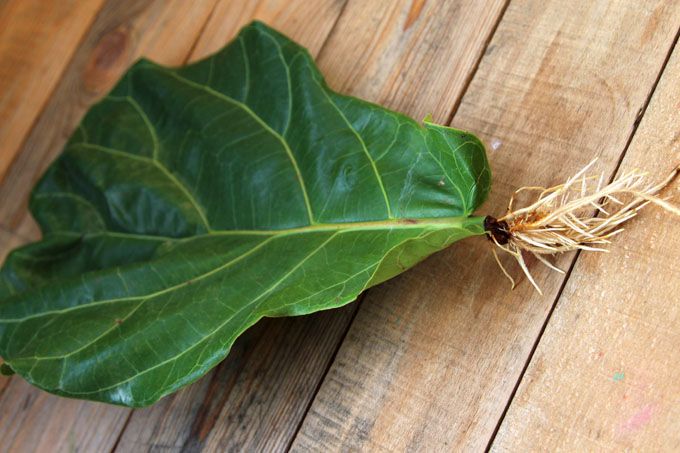
Method 3: Air Layering
Air layering is a bit more advanced but offers a higher success rate for larger, woody stems. It’s perfect if you want to create a new plant without cutting it off the parent plant immediately.
What You’ll Need
- A healthy fiddle leaf fig plant
- A sharp, sterilized knife
- Sphagnum moss
- Plastic wrap
- Twine or twist ties
- Rooting hormone (optional)
Step-by-Step Guide
- Select a Stem: Choose a woody stem that’s at least 1 foot long.
- Make an Incision: About 12 inches from the tip, make a small upward cut about one-third of the way through the stem.
- Apply Rooting Hormone: Apply rooting hormone to the cut if desired.
- Wrap with Moss: Moisten the sphagnum moss and wrap it around the cut area.
- Cover with Plastic Wrap: Secure the moss with plastic wrap and tie it off with twine or twist ties to hold it in place.
- Wait for Roots: Keep the moss moist and check periodically. Roots should start to form in a few weeks to a couple of months.
- Cut and Plant: Once you see a good amount of roots, cut below the new root ball and plant it in a pot with well-draining soil.
Tips for Success
- Keep the moss consistently moist.
- Be patient, as air layering can take longer than other methods.
Common Mistakes to Avoid
Avoiding these common mistakes will increase your chances of successful propagation:
- Single Leaf Propagation: Propagating from a single leaf often fails as it cannot develop into a full plant.
- Unsterilized Tools: Using unsterilized tools can introduce diseases that inhibit growth.
- Overwatering and Underwatering: Both extremes can cause the cuttings to die. Maintain consistent moisture without overwatering.
- Insufficient Light: Ensure the cuttings receive adequate indirect light but avoid direct sunlight.
- Weak Parent Plants: Use healthy parent plants to take cuttings for higher success rates.
- Rushing Soil Transition: Transitioning too quickly to soil can stress the new plant. Allow sufficient time for rooting.
Post-Propagation Care Tips
Proper care ensures the successful establishment of your propagated fiddle leaf figs:
- Light and Placement: Place the young plant in a spot with bright, indirect light to avoid scorching.
- Watering: Water only when the top of the soil feels dry. Ensure the soil remains moist but not soggy.
- Humidity and Temperature: Maintain humidity levels of 40-60% and a temperature range of 60°F-75°F.
- Avoid Sudden Changes: Avoid sudden environmental changes to prevent stress.
- Fertilizing: Apply an NPK fertilizer with a 3:1:2 ratio every 2-3 weeks during the growing season.
- Pruning: Prune in spring and summer to encourage bushy growth using sterilized pruners.

Propagating fiddle leaf figs is a fantastic way to expand your indoor plant collection without spending a dime. Whether you choose the simplicity of water propagation, the direct approach of soil, or the advanced technique of air layering, you’ll soon find yourself surrounded by lush, thriving fiddle leaf figs. Remember to be patient and attentive to your cuttings, and soon enough, you’ll have plenty of these gorgeous plants to brighten up your home or share with fellow plant lovers. Happy propagating!
FAQs
Can you grow a fiddle leaf fig from a cutting?
Yes, you can grow a fiddle leaf fig from a cutting. Propagating a fiddle leaf fig is commonly done by taking a stem cutting and rooting it either in water or soil .
Can you propagate a fiddle leaf fig in water?
Yes, propagating a fiddle leaf fig in water is a popular method. Place the cutting in a jar of clean water, ensuring it receives plenty of indirect light, and change the water regularly until roots develop .
How to get fiddle leaf fig to branch?
To encourage a fiddle leaf fig to branch:
- Pruning: Cut off the top of the plant just above a node (the point where leaves grow). This stimulates the plant to produce new branches below the cut.
- Pinching: Pinch off the new growth tips. This can also encourage side shoots to develop .
Will a fiddle leaf fig grow back if you cut it?
Yes, a fiddle leaf fig will typically grow back if you cut it. Pruning can stimulate new growth and branching, leading to a fuller plant .
Can you cut the top off a fiddle leaf fig and plant it?
Yes, you can cut the top off a fiddle leaf fig and plant it. The top cutting can be propagated either in water or directly in soil, where it will develop roots and grow into a new plant.
